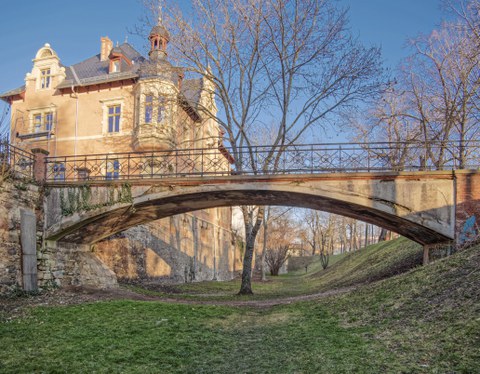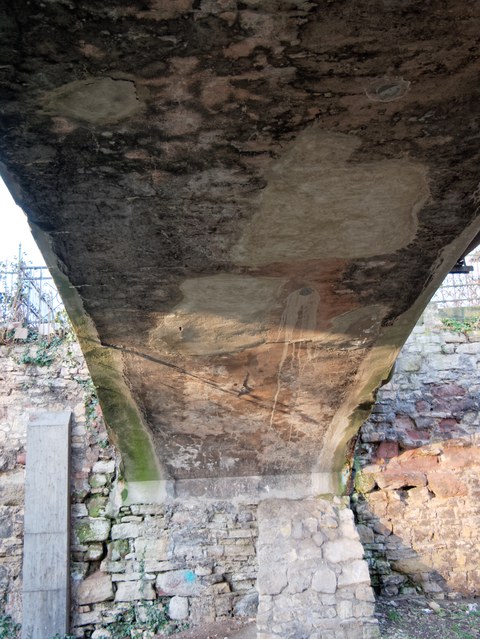Restoration Thainburgbrücke Naumburg
Table of contents
Project data
|
Titel | Title |
Report in the annual report 2018
RESTORATION OF THE THAINBURG BRIDGE IN NAUMBURG WITH CARBON REINFORCED CONCRETE

Thainburgbrücke Naumburg, Ansicht und sichtbare Schäden
The designation of the Naumburg Cathedral as a World Heritage Site in 2018 not only recognized the significance of such a structure but also brought a small arch bridge into focus – the Thainburg Bridge. As part of the planning for its demolition and replacement construction, the engineering firm Steinbacher Consult discovered, that it is an arch bridge built during the years 1893/94, making this building one of the first reinforced concrete structures in Germany. The Monuments Office declared the extremely slender arch structure to be a unique building due to its rarity throughout Germany.

Thainburgbrücke Naumburg, Zustandsbild Beton Unterseite
However, due to the age of the bridge, it is in need of renovation because the concrete is almost completely carbonated, and the existing steel reinforcement is extremely damaged by corrosion. The Institute of Concrete Structures of the TU Dresden proposed a rehabilitation solution with carbon reinforced concrete and convinced the city committees of Naumburg to use this solution. The train of thought: “The building was extremely innovative at the time of its construction, so it should be rehabilitated with innovative technology,” was a decisive argument to get an approval.
With a thin reinforcing layer of carbon reinforced concrete analogous to TUDALIT, the structure can be permanently restored and preserved for posterity, without visibly affecting the appearance and thus the slenderness. A positive aspect of heritage protection is that the original substance of the structure is preserved. With regard to the specific ambient conditions of the bridge, it can be stated that strengthening analogous to the TUDALIT approval is also applicable here in outdoor areas. The reinforcement of the underside of the arch should be supplemented by another layer of carbon reinforced concrete to seal it permanently against penetrating moisture. The ingress of water is largely prevented by the fine crack pattern, at the same time this mineral layer ensures good drying conditions.
The restoration is planned for the year 2019.
